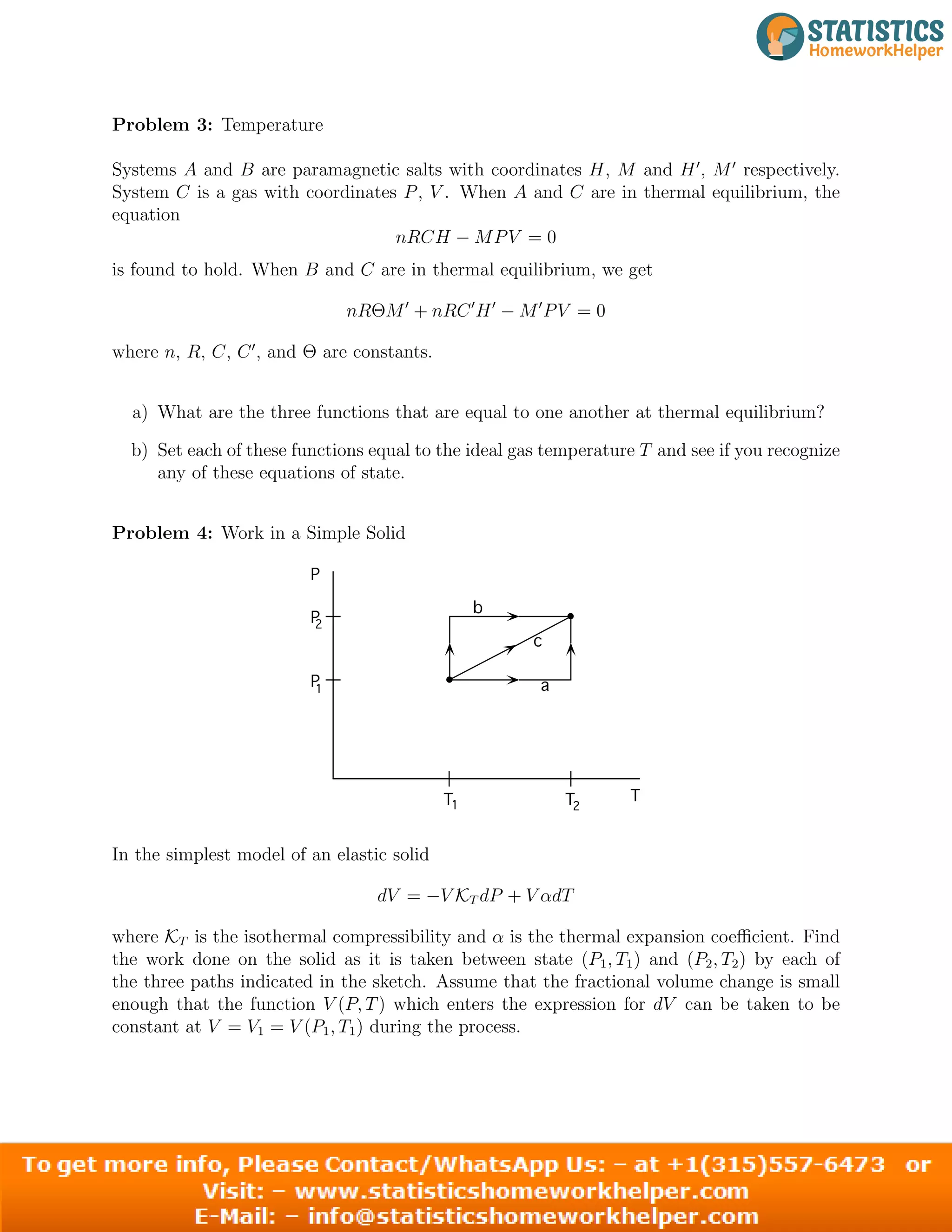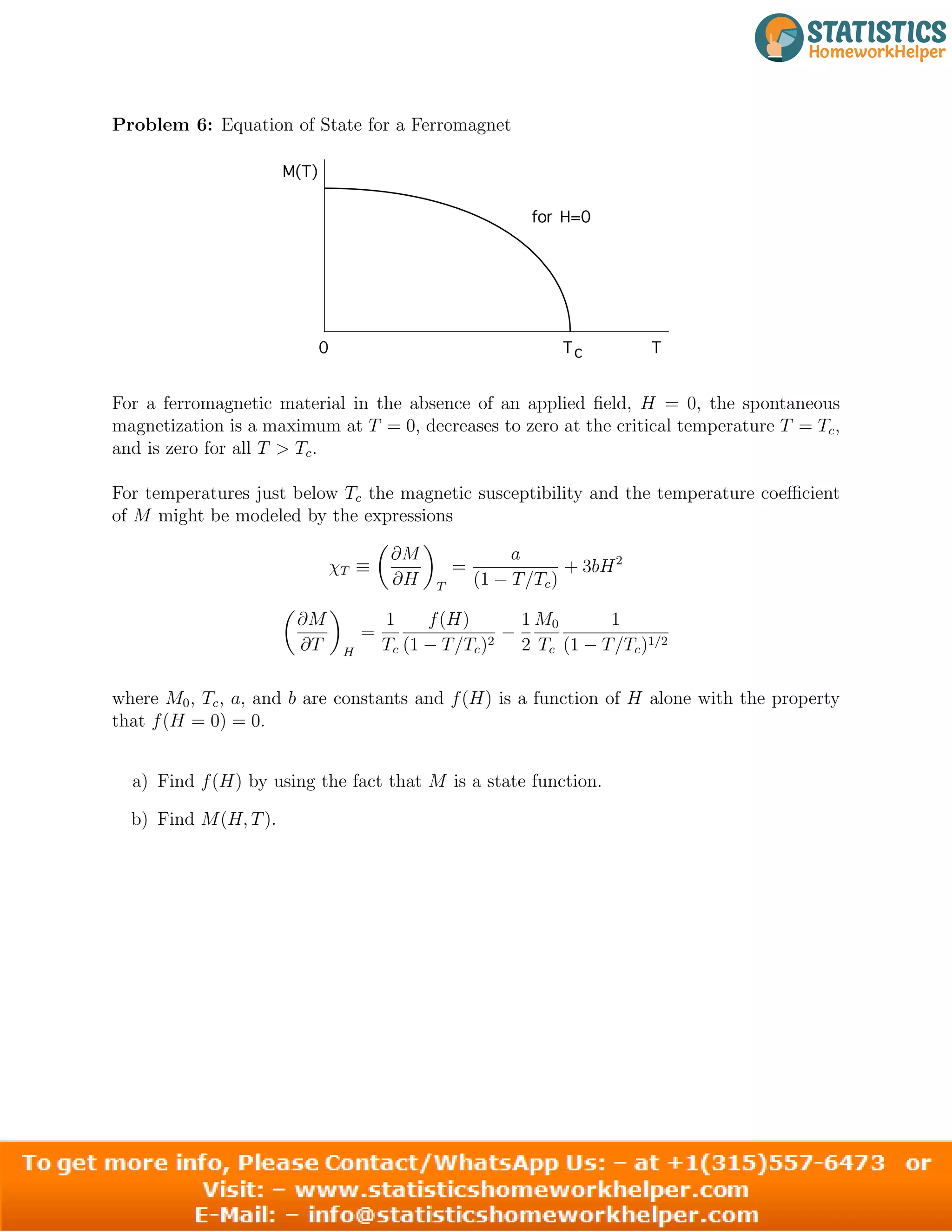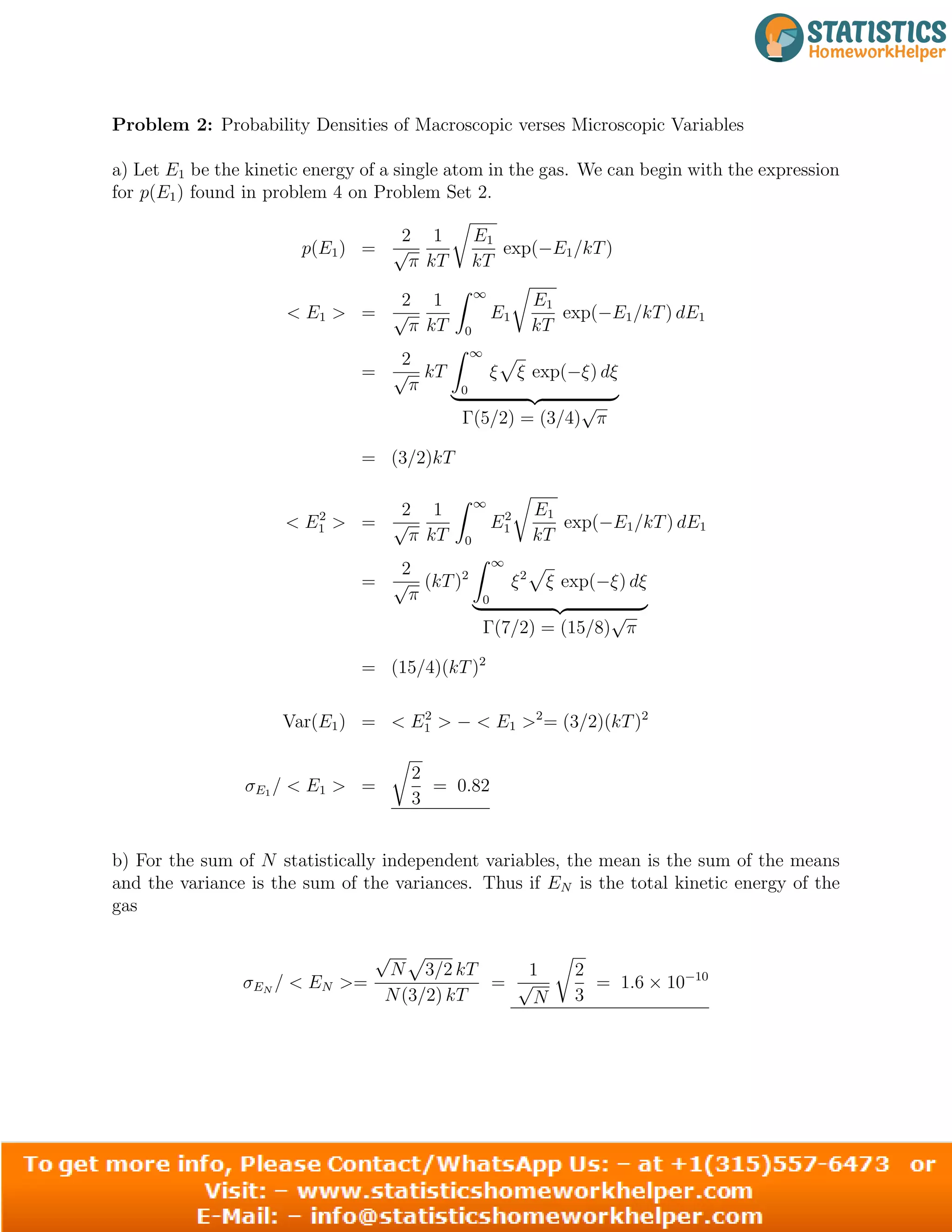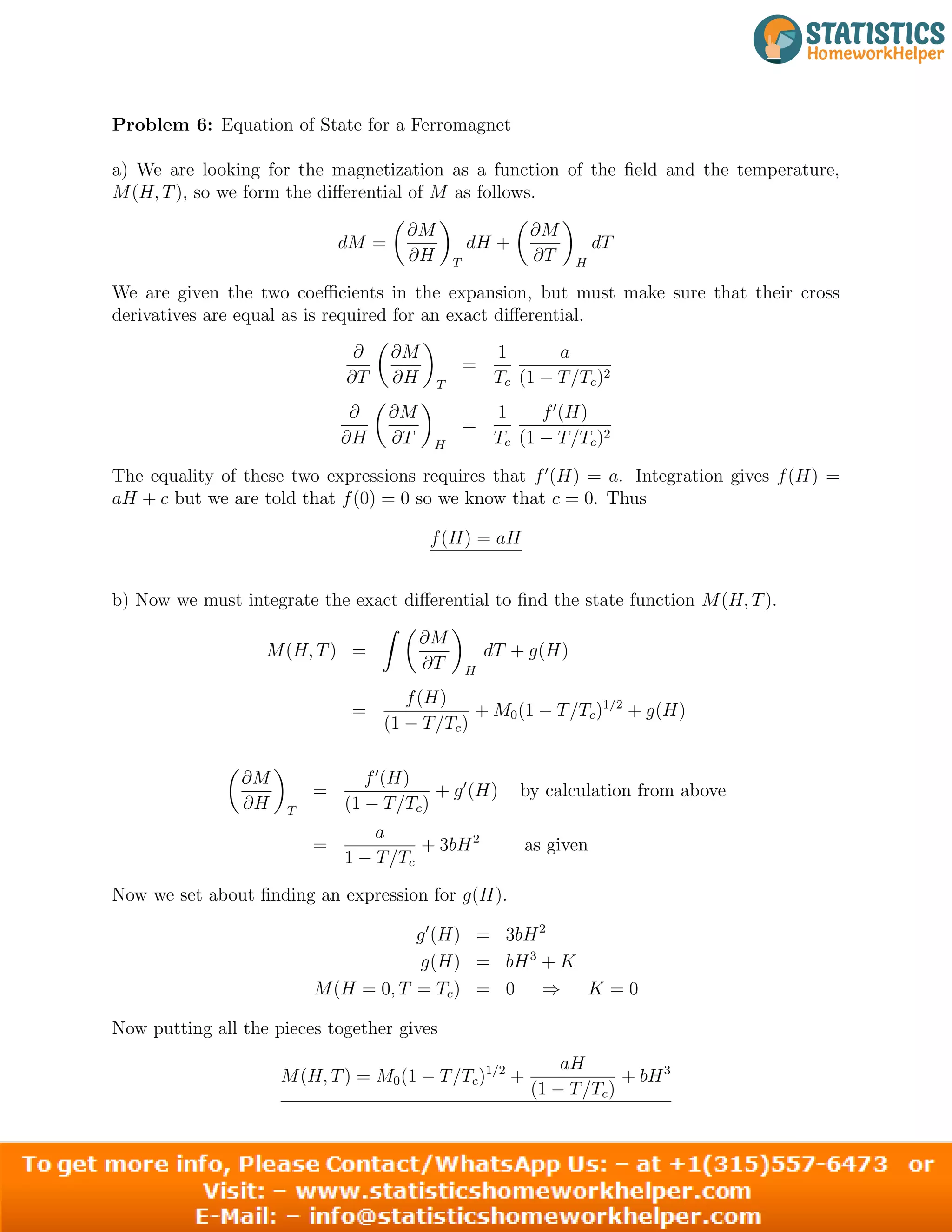The document is a problem set from the Massachusetts Institute of Technology's Physics Department for the Statistical Physics I course, covering various topics in statistical mechanics and thermodynamics. It includes six problems regarding impurities in nano-wires, kinetic energies in gases, thermal equilibrium, work in solids and radiation fields, and equations of state for ferromagnets. Each problem requires analytical solutions and application of physical principles, with a focus on mathematical calculations and concepts from statistical physics.
![MASSACHUSETTS INSTITUTE OF TECHNOLOGY
Physics Department
8.044 Statistical Physics I Spring Term 2013
Problem Set #3
Due in hand-in box by 12:40 PM, Wednesday, February 27
Problem 1: Clearing Impurities
p(x)
x
0 a
1 / 3
In an effort to clear impurities from a fabricated nano-wire a laser beam is swept repeatedly
along the wire in the presence of a parallel electric field. After one sweep an impurity initially
at x = 0 has the following probability density of being found at a new position x
1 2
p(x) = δ(x) + exp[−x/a] 0 ≤ x
3 3a
= 0 elsewhere
where a is some characteristic length.
Give an approximate probability density for the total distance d the impurity has moved
along the wire after 36 sweeps of the laser beam.
Problem 2: Probability Densities of Macroscopic verses Microscopic Variables
Consider one cubic centimeter of a dilute gas of atoms of mass M in thermal equilibrium
at temperature T= 0o
C and atmospheric pressure. (Recall that Lochmidt’s number – the
number of atoms (or molecules) in a cubic meter of an ideal gas at T= 0o
C and atmospheric
pressure – has the value 2.69×1025
m−3
.)
a) For the kinetic energy of a single atom, find a numerical value for the ratio of standard
deviation (the square root of the variance) to the mean. You may use the results you
found in problem 4 on Problem Set 2.
b) Find the same ratio for total energy of the gas, assumed to be all kinetic.
1
Problem](https://image.slidesharecdn.com/linearregression-230415053536-01c1b386/75/Multiple-Linear-Regression-Homework-Help-1-2048.jpg)



![MASSACHUSETTS INSTITUTE OF TECHNOLOGY
Physics Department
8.044 Statistical Physics I Spring Term 2013
Solutions to Problem Set #3
Problem 1: Clearing Impurities
Since we are asked for an approximate answer we will resort to the central limit theorem.
For this we need < x > and < x2
> for a single sweep of the laser beam.
Z ∞
2 ∞
< x > = x p(x) dx = a
Z
2
ξ exp(−ξ) dξ = a
3
∞
|0
{z
1
}
3
< x2
> =
Z ∞
4
x2 2 ∞
p(x) dx = a2
3
Z
ξ2
exp(
0
−ξ) dξ = a2
∞
| {z
2
}
3
2 2
4 4
Var(x) = x − x =
3
−
9
a2 8
= a2
9
The general form of the central limit theorem is
1
p(d) ≈ √ exp[−(d
2πσ2
− d )2
/2σ2
]
with
d = 36
2
× x = 24 a
σ = 36 × Var(x) = 32 a2
Although it was not asked for, here is a sketch of the resulting probability density.
d
p(d)
10a 20a 30a 40a 50a
0.1a
1
Solution](https://image.slidesharecdn.com/linearregression-230415053536-01c1b386/75/Multiple-Linear-Regression-Homework-Help-5-2048.jpg)




